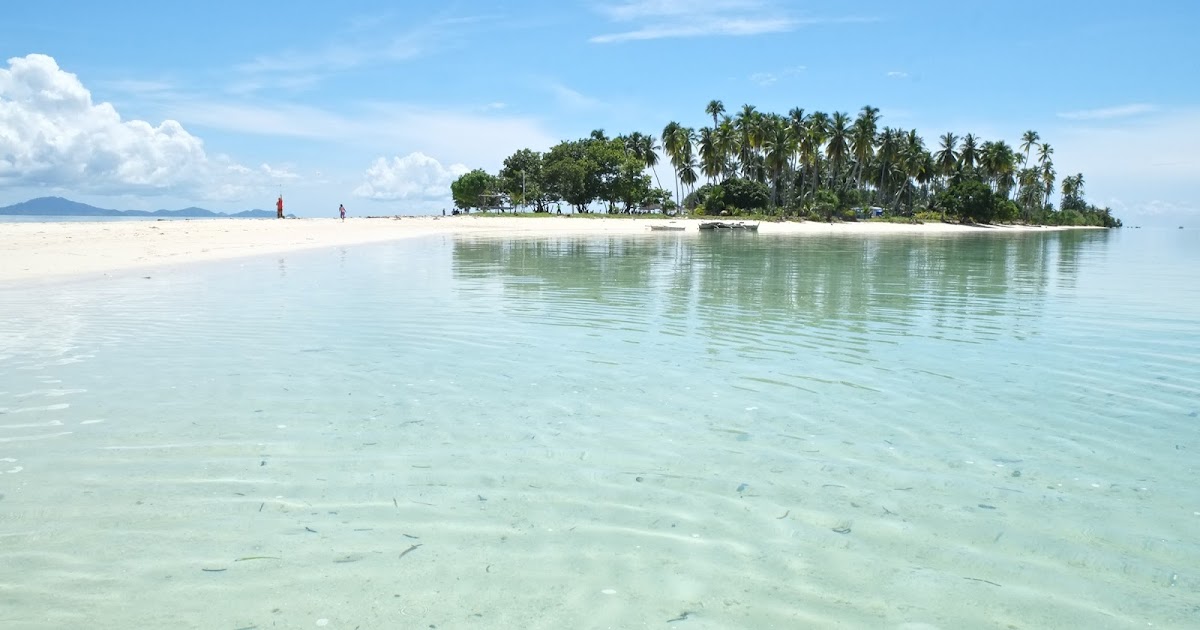Tucked away in the southernmost region of the Philippines, Tawi-Tawi is a less frequented tourist spot due to its proximity to the borders of Malaysia and Indonesia. While it may not be the top-of-mind destination for travelers compared to popular spots like Boracay and Palawan, Tawi-Tawi offers a hidden treasure waiting to be explored by intrepid adventurers.
Tawi-Tawi, boasting more than 100 islands, presents a unique blend of untouched nature, vibrant culture, and warm hospitality that is sure to leave a lasting impression, particularly on beach and natural wonder enthusiasts. The province boasts rich fauna and flora, primarily indigenous to its islands. Mt. Bongao, considered a sacred mountain by the Badjao community, harbors a diverse range of bird species and other wildlife, attracting birdwatchers to the area. Additionally, Tawi-Tawi is home to numerous diving spots where sea turtles, known as pawikans, frequent as some of the province’s islands serve as their breeding grounds.

Tawi-Tawi Map I Image source: https://earthobservatory.nasa.gov
Tawi-Tawi takes great pride in being the Philippines’ initial center of Islam, with the establishment of the first mosque in the island municipality of Simunul by the Arab missionary, Sheikh Karimul Makhdum, in 1380. Additionally, the province boasts of noteworthy cultural discoveries, such as the 800-500 million-year-old artifacts found in Balobok Cave situated in Lakit-Lakit, Bongao, Tawi-Tawi. Natural attractions abound in Tawi-Tawi, including the renowned Bud Bongao and the Panampangan Island, renowned for its white powdery beach, which is believed to have the country’s longest sandbar.
Tawi-Tawi is renowned for its distinct cultural practices, steeped in ancient traditions and spirituality that are unique from the Islamic teachings passed down from their ancestors. The province’s natural resources remain rich and biodiverse, with Tawi-Tawi being located at the heart of the Biodiversity Triangle in Southeast Asia. The majority of the population, 80% of whom belong to the Sama tribe, is considered one of the most peaceful ethnic groups in the Philippines.

Lepa Festival / Kamahardikaan Sin Tawi-Tawi I Image source: https://www.mymindanao.com
Tawi-Tawi boasts numerous unexplored islands that harbor some of the Philippines’ most well-preserved landscapes and ecosystems. This province offers the perfect rustic getaway, complete with terrestrial and marine wonders. Tawi-Tawi is among the country’s growing eco-tourism destinations.
Visitors to Tawi-Tawi can indulge in a range of experiences, from cascading waterfalls and pristine beaches to mystic caves and old-growth forests teeming with rich biodiversity. The scenic mountains also offer a breathtaking view of the province’s natural beauty.
Here are some of the must-see attractions in Tawi-Tawi
Panampangan Island
Boasting the longest sandbar in the Philippines, is a highly sought-after tourist destination in Tawi-Tawi. With its untouched and unspoiled natural beauty, visitors are left captivated. Running across the expanse of white sands and swimming in the clear turquoise waters are just a couple of the exciting activities to do here. The island’s thriving marine life provides an unforgettable snorkeling experience, and as a result, Panampangan Island has become a premier beach destination in Tawi-Tawi.

Panampangan Island I Image source: Rising Philippines FB Page
Known for its crystal-clear waters, pristine white sand beaches, and the longest sandbar in the country, Panampangan Island is one of the most popular destinations in Tawi-Tawi. Additionally, the sandbar forms a beautiful crescent shape, connecting Panampangan to Basibuli during low tide, offering visitors a unique and breathtaking view of the surrounding sea.Panampangan Island is situated in the Municipality of Sapa-Sapa, and to get there, one must take a speedboat from Bongao, the provincial capital, and travel for around 45 minutes to an hour. Panampangan Island is located within Basibuli Shoal.
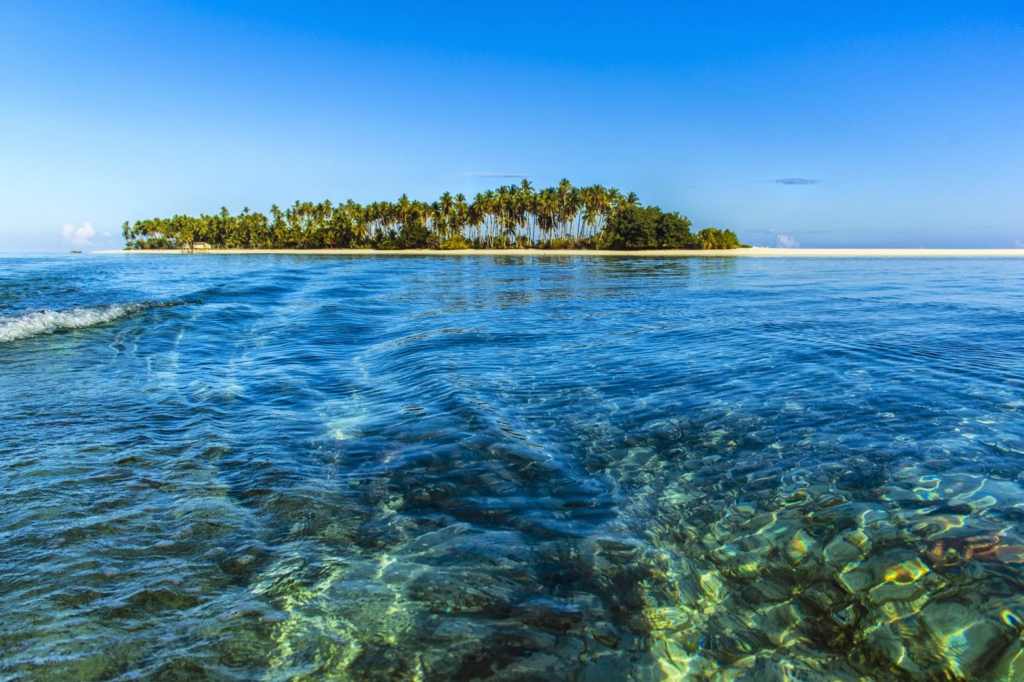
Panampangan Island I Image Source: https://wikimapia.org
In addition to the breathtaking views, the island presents an opportunity for tourists to witness a preserved traditional way of life amidst the modernization of the region. Visitors can immerse themselves in the local culture, observe daily customs and practices, and even procure fresh seafood, seashells, and seaweed directly from the inhabitants. The coastline is dotted with stilt houses, where Sama Badjao and Tausug communities reside.
- Location/Jump-off: Bongao town
- Boating Time: 1-2 hours
Bud Bongao Peak
Bud Bongao Peak is a popular hiking destination in Tawi-Tawi that highlights the region’s rich biodiversity. Its dense rainforest covers much of the slope and is home to hundreds of monkeys, some with white fur and others with brown fur, that can be seen while trekking to the mountain’s summit. These monkeys are known to make peculiar sounds at night, which have led some nighttime trekkers to mistake them for sorcerers. To fully experience hiking up Bud Bongao Peak, visitors are advised to bring bananas to share with the monkeys along the way. It’s a small gesture that allows travelers to interact with the wildlife and create a unique experience while hiking.
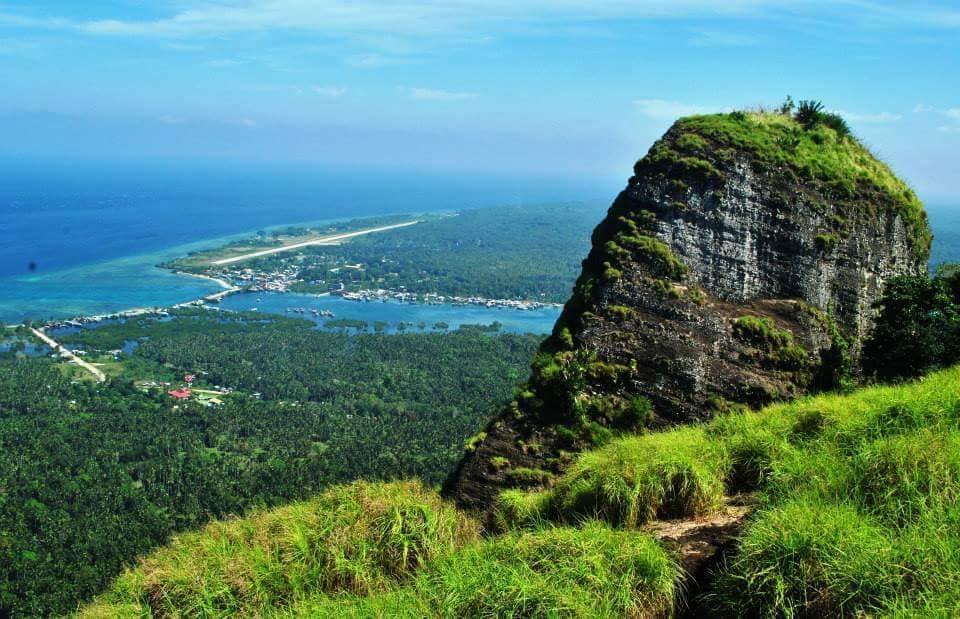
Bud Bongao Peak I Image Source: https://danielsecotravels.com
According to local tradition, a visit to Tawi-Tawi is incomplete without ascending its iconic peak, Bud Bongao. Bud, meaning mountain in the Tausug language, is considered a sacred location for the community in Tawi-Tawi, where they can pray, meditate, and seek blessings from Allah.
Nowadays, Bud Bongao is a popular spot for enjoying scenic views, having picnics, observing the sunrise or sunset, and taking photographs at its summit. It’s highly recommended that you include this destination on your itinerary to fully experience Tawi-Tawi.
- Location/Jump-off: Simunol
- Elevation: 1,030 feet above sea level
- Trekking Time: 1-2 hours
- Operating Time: 6 AM to 4:30 PM
Sheik Makhdum Mosque
The oldest mosque in the Philippines is Masjid Sheikh Karimul Makhdum, located in Tubig Indangan on the island municipality of Simunul. Sheik Karimmul Makhdum, an Arab Missionary, spearheaded the construction of the mosque in 1380 AD, making it the first mosque ever built in the country. His efforts played a significant role in spreading Islam throughout the Southern Philippines.

Sheik Makhdum Mosque I Image Source: https://www.tripadvisor.com.ph
Today, Masjid Sheikh Karimul Makhdum is recognized as a National Historical Landmark and is named after the Arab missionary.
- Location/Jump-off: TubigIndangan, Simunul
Gusong Reef
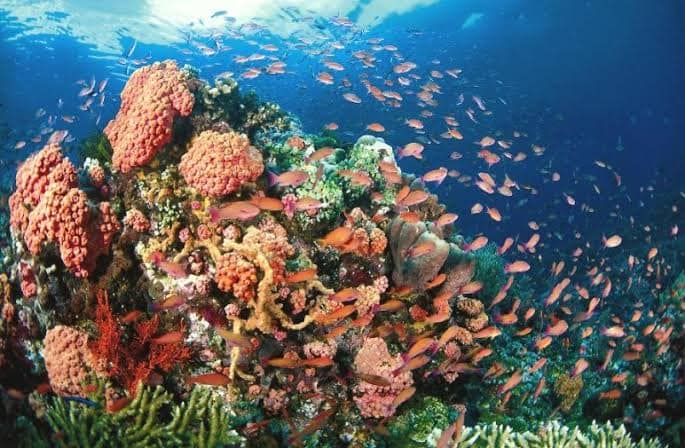
Gusong Reef I Image Source: Bucket List Journey: Philippines FB Page
Gusong Reef is among Tawi-Tawi’s most well-preserved tourist spots, offering one of the best diving experiences in the Philippines. The coral reef is renowned for its pristine condition and teems with a variety of colorful and stunning aquarium and non-aquarium species. Gusong Reef is a must-visit destination for diving enthusiasts.
- Location/Jump-off: Cagayan de Tawi-Tawi
Turtle Islands
The Turtle Islands, also known as “Taganak Island,” serve as a breeding site for the endangered Philippine Turtle. This group of nine islands is located at the southwestern tip of the Philippines, north of Borneo. Six of these islands (Taganak, Baguan, Boan, Great Bakkungan, Lihiman, and Langaan) are under Philippine jurisdiction, while the remaining three (Bakkungan Kechil, Gulisan, and Selingan) are under the jurisdiction of Malaysia.
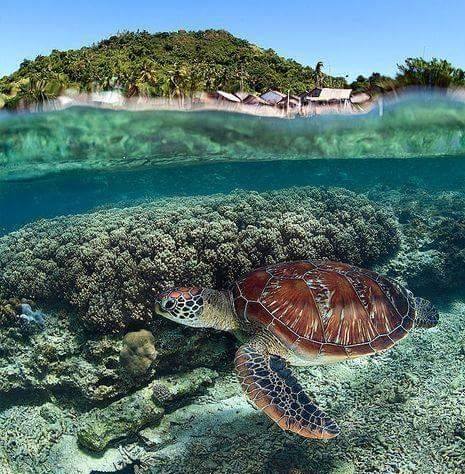
Turtle Island I Image Source: https://www.facebook.com/turtleislands.gov.ph
In order to protect the turtles from poaching and other illegal activities, the Turtle Islands were declared a Natural Wildlife Sanctuary. Every year, hundreds of these turtles lay their eggs on the islands’ shores..
- Location/Jump-off: Taganak
Balobok Rock Shelter
Balobok Rock Shelter is a cave that was formed by the constant pounding of ocean waves and other weathering factors. The cave has been the subject of archaeological digs, revealing various ancient materials such as bone tools, flake tools, artifacts, and animal remains.
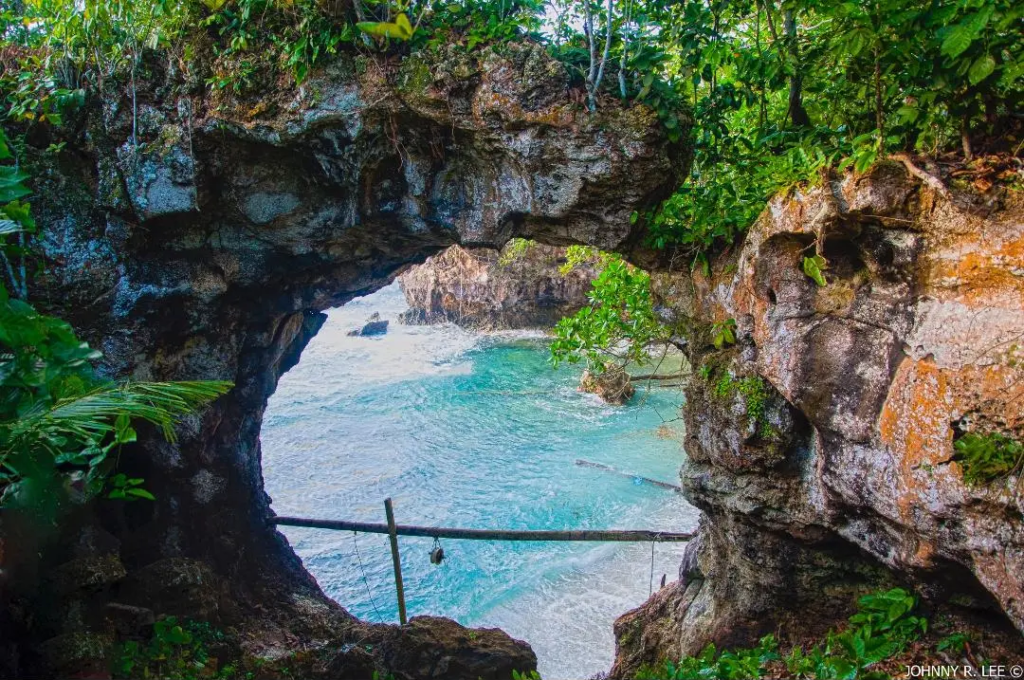
Balobok Rock Shelter I Photo by Johnny R. Lee via Maharlika.tv
Located just a few meters away from the cave is the Boloboc Rock Formation, a natural karst rock that serves as a perfect spot for cliff diving or jumping. The Boloboc Rock Formation provides an ideal platform for adrenaline seekers to take a leap of faith and plunge into the clear waters below.
- Location/Jump-off: BrgyLakitLakit, Bongao
- How to Get There: You can ride a tricycle from the town proper of Bongao. The travel time is approximately 1 hour. It is advisable to arrange transportation beforehand and to inform the driver of your desired destination.
Sangay Siapo Island
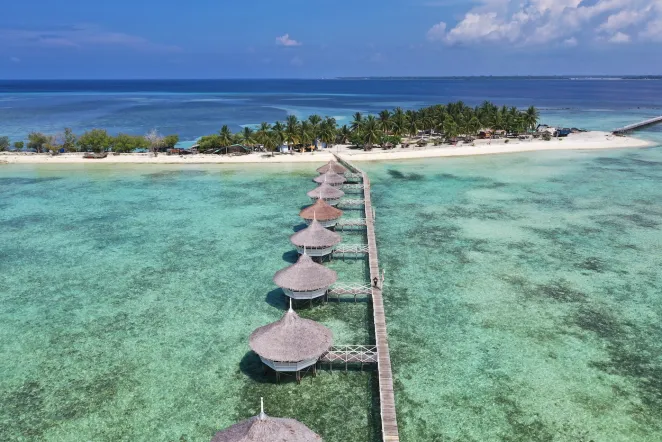
Sangay Siapo Island I Image source: https://outoftownblog.com
Sangay Siapo Island offers the same picturesque beauty as Panampangan Island, with its white sandy beaches and crystal-clear turquoise waters. The island’s rich marine life makes it an ideal destination for snorkeling and scuba diving. With its increasing popularity, Sangay Siapo has become one of the top Tawi-Tawi tourist spots.
- Location/Jump-off: Simunul
- Boating Time: 30 minutes
Despite the breathtaking landscape and potential as a tourist destination, Tawi-Tawi is often associated with safety concerns due to reports of piracy and armed conflicts in the area. However, it is important to note that Tawi-Tawi is considered the safest province in the Basilan-Sulu-Tawi-Tawi archipelago, thanks in part to the naval base in Panglima Sugala and the regular coast guard patrols along the province’s coastlines. The local government, along with the military and police, has made substantial efforts to ensure the safety and security of visitors to the province.
Where to Stay in Tawi-Tawi
- Rachel’s Place Hotel and Restaurant
Address: Ilmon Street Lamion, Bongao, Tawi-Tawi
Rachel’s Place is a highly sought-after lodging option in Bongao that caters to a diverse range of guests, including backpackers and business travelers. Its prime location near the city center makes it a convenient choice for travelers looking to explore the area’s attractions. The hotel offers spacious air-conditioned rooms that can accommodate 2-4 people and a delightful garden where guests can relax, socialize or work using the hotel’s Wi-Fi. In addition, there is a dining area and a multi-purpose hall for events and meetings. For those interested in photography, Rachel’s Place is also an ideal spot to capture stunning sunset photos.
- Hotel Juana Grill and Sandbar Restaurant
Address: Datu Halum St., Bongao, Tawi-Tawi
Located in the heart of Bongao’s vibrant trading hub, this hotel is perfect for budget-conscious travelers seeking a simple yet comfortable place to stay for the night.
- Beachside Inn Hotel and Restaurant
Address: Sowangkagang, Bongao, Tawi-Tawi
Located right by the beach, Beachside Inn is considered the pioneer hotel in Bongao. Its popularity among the locals is evident in their frequent recommendation of the hotel to tourists. Aside from its comfortable accommodations, Beachside Inn boasts an alfresco dining area, which is widely regarded as one of the best places to dine in Tawi-Tawi.
- Sandbar Lepa Beach Hotel and Restaurant
Address: Pasiagan, Bongao, Tawi-Tawi
Sandbar Lepa Beach Hotel is a modern hotel in Bongao with newly-built minimalist rooms that come with twin beds, air-conditioning, cable TV, and a conference hall.
- Almari Beach Resort
Address: Pahut, Bongao, Tawi-Tawi
This serene retreat located along a charming shoreline was the location of the music video for Christian Bautista song that showcases the beauty of Tawi-Tawi. The property consists of a row of twelve rooms that overlook a breathtaking view of the sea.
What to Eat in Tawi-Tawi
Tawi-Tawi’s cuisine is a fusion of Moro and Malaysian flavors, combined with native dishes from various ethnic groups in Mindanao such as Tausug, Maranao, Jama Mapun, and Banguingui. With its thriving seafood industry, the province’s culinary scene is dominated by delectable seafood dishes that offer a unique and flavorful experience. Expect to embark on an extraordinary gastronomical adventure when exploring the rich blend of delicious flavors that Tawi-Tawi has to offer.
Chicken Piyanggang
This dish is called Ayam Pansoh, a traditional Malaysian-inspired dish that has become popular in Tawi-Tawi. Similar to Tiyula Itum, the chicken is cooked in a pot with burnt coconut meat to create a rich and flavorful sauce. The addition of chili, turmeric, lemongrass, onions, garlic, and coconut milk adds a burst of aromatic flavors to the dish. Ayam Pansoh is a must-try for those who love spicy and savory dishes.
Pickled Agal-Agal (Seaweed)
It is a salad made with thinly sliced green mangoes and Tawi-Tawi’s famous seaweed, Agal-agal. The seaweed is pickled with a mix of olive oil, lemon juice, and brown sugar, giving it a tangy and slightly sweet taste. It’s a refreshing and healthy dish that’s perfect for a hot day in Tawi-Tawi.
Braised Beef in Charred Coconut Meat (Tiyula Itum)
Tiyula Itum is a traditional Tausug dish from Tawi-Tawi that features braised beef cooked with charred coconut meat or burned coconut. The dish is characterized by its dark color, which comes from the charred coconut meat used in the cooking process. Other ingredients used in making Tiyula Itum include spices such as ginger, garlic, and turmeric, as well as chili peppers and onions. The beef is slow-cooked in a mixture of these ingredients until it is tender and flavorful, resulting in a savory and slightly sweet taste that is unique to Tiyula Itum. The dish is often served with rice and is a must-try for visitors to Tawi-Tawi who want to experience the province’s rich culinary culture.
Chicken and Beef Satti
Satti is actually a popular dish in the southern Philippines, particularly in the Zamboanga Peninsula, Basilan, and Sulu. It consists of skewered and grilled meat, usually chicken or beef, which is then served with a special sauce made with ground peanuts, spices, and coconut milk. It is typically eaten with a type of sticky rice called “puso” or “hanging rice,” which is cooked in woven pouches made from coconut leaves. Satti is a favorite breakfast or mid-morning snack among locals and visitors alike, and can often be found in street food stalls and markets in the region.
Kahanga Rendang
This mouth-watering dish composed of shellfish meat is called Kinilaw or Kilawin in Tawi-Tawi. It is prepared by marinating the shellfish meat in vinegar and spices, mixed with finely chopped onions, ginger, and chili peppers. Some variations may also include coconut milk or coconut vinegar, which adds a creamy texture and a tangy flavor to the dish.
Pastil
Actually, Pastil is a traditional Tausug dish, consisting of rice topped with shredded chicken, beef, or fish and wrapped in banana leaves. It is usually served with a side of spicy vinegar sauce for added flavor. The dish is popular not only in Tawi-Tawi but also in other parts of Mindanao.
Malaysian Cuisine Mee Goreng
Tawi-Tawi’s proximity to Malaysia has influenced its cuisine, and many local eateries serve Malaysian dishes such as Nasi Goreng (fried rice), Nasi Lemak (coconut rice), Mee Goreng (fried noodles), Pataya Ayam Daging (chicken or beef fried rice wrapped in egg), Mee Bandung (spicy noodle soup), and Mee Hailam (Hainanese-style noodles).
Travel tip: Tawi-Tawi is a predominantly Muslim province and pork is not part of their dietary restrictions. Therefore, visitors are advised to respect local customs and avoid consuming pork during their stay in Tawi-Tawi.
Where to Eat in Tawi-Tawi
- Ibbo Beach Resort
Consider dining at the restaurant of Ibbo Beach Resort if you have a craving for fresh seafood. They serve a variety of the day’s freshest catch that is sure to satisfy your taste buds.
Address: Pasiagan, Bongao
- Rachel’s Place
Rachel’s Place is not only known for its popular accommodation in Tawi-Tawi, but also for its in-house restaurant that offers good food, fraps, brewed coffee, and all-day breakfast options, particularly silog dishes.
Address: Lamion, Bongao
- Fatima Shara
This humble restaurant located in the downtown market area offers a variety of local dishes, such as tiyulah itum, agal-agal salad, grilled fish, and kinilaw.
Address: Downtown, Bongao, Tawi-Tawi
- Sandbar Beach Lepa and Restaurant
Their in-house restaurant offers an extensive menu of Mindanaoan cuisine, which includes a variety of local favorites. Their generous servings are ideal for groups of family or friends.
Address: Pasiagan, Bongao
- King of Chicken
This restaurant is aptly named for its specialty in serving flavorful chicken-based dishes, including beloved local favorites like chicken satay, Chicken Piyanggang, and Tiyula Itum.
Address: Downtown area, Bongao
- Sameera Coffee
Sameera Coffee is a cozy coffee shop located in the heart of the town, often compared to Tawi-Tawi’s version of Starbucks, but with its own unique charm. It’s a great spot to relax and enjoy a cup of freshly brewed coffee while taking in the sights and sounds of everyday life in the area. Other dining options in the downtown area of Tawi-Tawi include AMZ Snack House and Juana Hotel & Restaurant.
Practical Information and Tips
Security
While Tawi-Tawi is now generally considered safe, it is strongly advised to first register at the tourism office before embarking on an island-hopping exploration of the area. Upon registration, tourists will receive a short briefing from tourism officers about the travel guidelines and useful tips for exploring Tawi-Tawi.
Currency
Despite its proximity to Malaysia, the Philippine Peso remains the main currency used in Tawi-Tawi. The downtown area of Bongao provides access to ATM machines from Philippine National Bank (PNB), Metrobank, and Allied Banking Corporation. However, there are no ATM machines on the other islands of Tawi-Tawi. As credit or debit card acceptance is limited in Tawi-Tawi, it is advisable to bring sufficient cash to cover your expenses during your stay in the area.
Language
Tawi-Tawi’s primary language is Tausug, and many residents also speak the local Sama language, particularly in Sitangkai. However, communication won’t be a problem in Tawi-Tawi as nearly all residents can also speak Chavacano, Cebuano, Tagalog, Yakan, and English. Moreover, a few locals can speak Malay as well.
Religion
Around 99% of Tawi-Tawi’s population, which is approximately 390,735 individuals, practices Islam, while the remaining 0.7% are Christians.
Be sure to save this Tawi-Tawi travel guide for future reference and use it to plan your trip accordingly.

